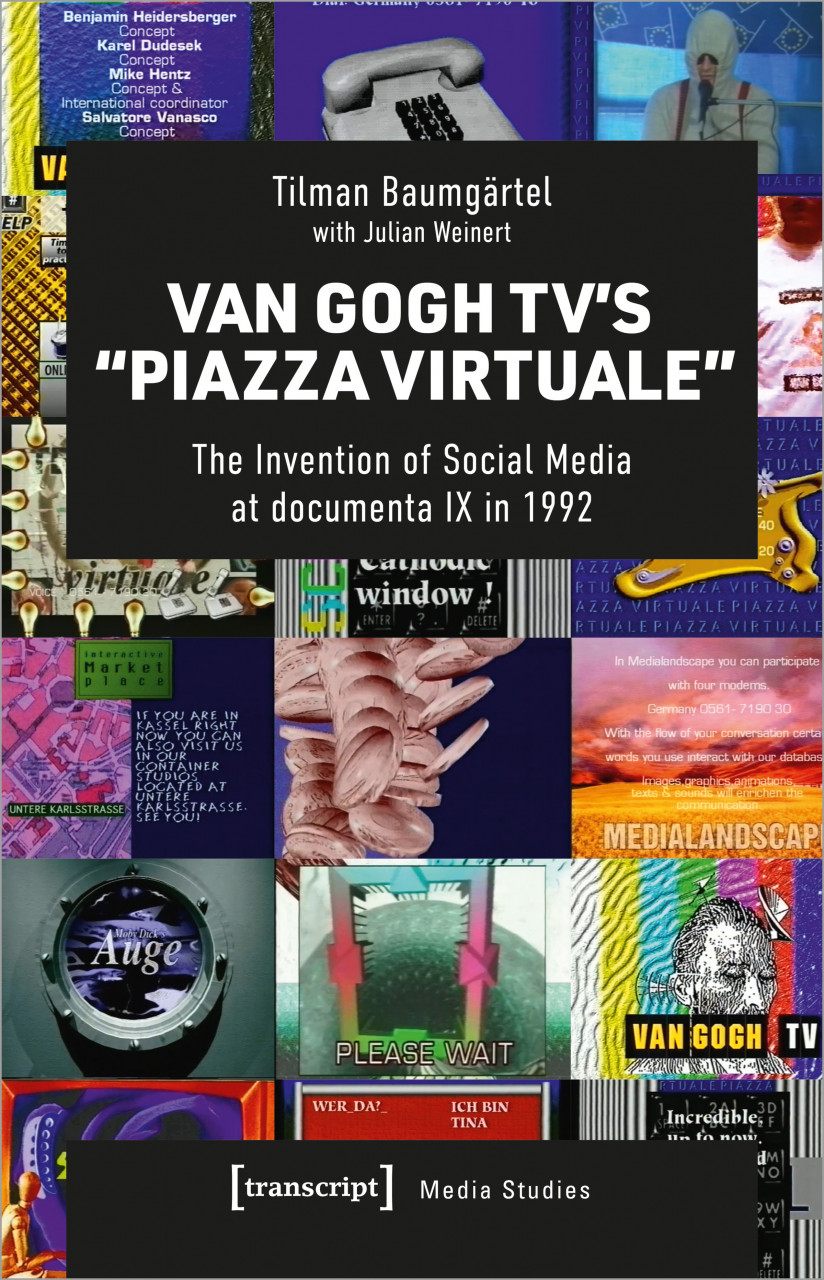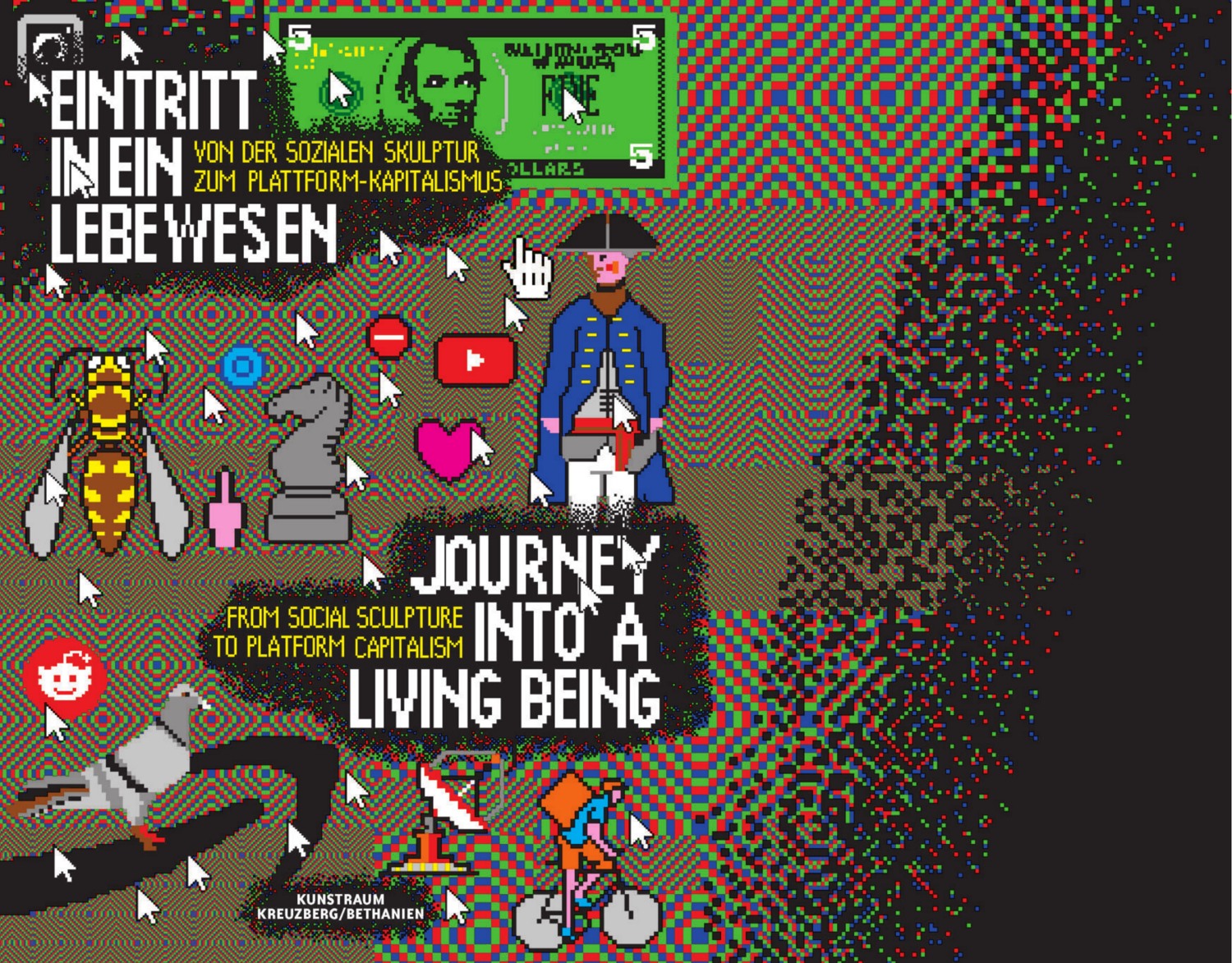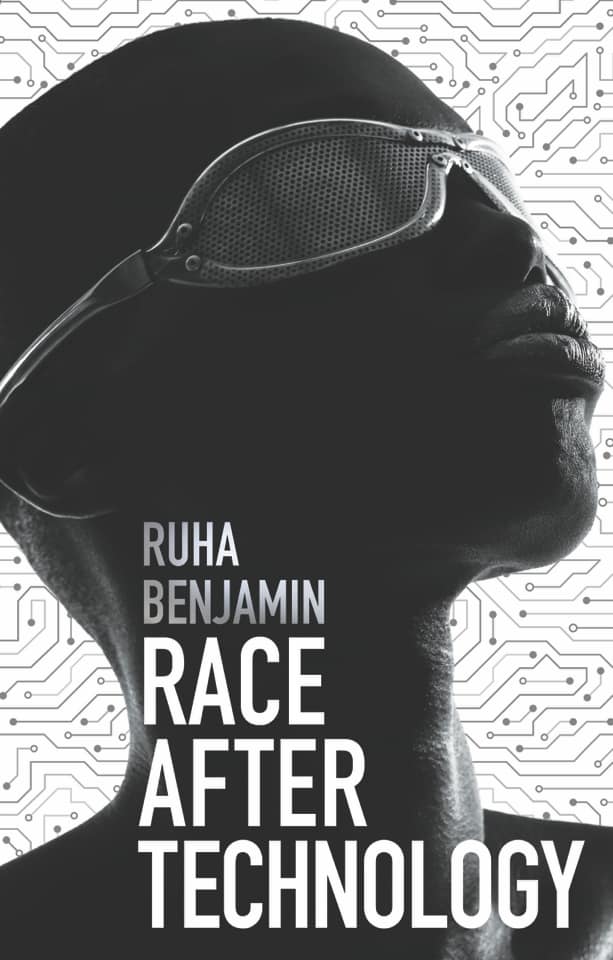Tilman Baumgärtel, Julian Weinert: Van Gogh TV’s Piazza Virtuale: The Invention of Social Media at documenta IX in 1992 (2021)
Filed under book | Tags: · art, art history, internet, media art, social media, television

“Piazza virtuale by the group of artists known as Van Gogh TV was not only the biggest art project ever to appear on television, but from a contemporary point of view the project was also a forerunner of today’s social media. The ground-breaking event that took place during the 100 days of documenta IX in 1992 was an early experiment with entirely user-created content. This is the first book-length study of this largely forgotten experiment: it documents the radicality of Piazza virtuale‘s approach, the novel programme ideas and the technical innovations. It also allows, via QR codes, direct access to videos from the show, which until now have been inaccessible.”
Publisher transcript, Bielefeld, December 2021
Media Studies series, 96
Creative Commons BY-NC-SA 4.0 license
ISBN 3837660664, 9783837660661
231 pages
Research project website
Publisher
WorldCat
PDF, PDF (updated on 2023-7-31)
Comment (0)Eintritt in ein Lebewesen. Von der sozialen Skulptur zum Plattform-Kapitalismus / Journey Into a Living Being: From Social Sculpture to Platform Capitalism (2020) [German/English]
Filed under catalogue | Tags: · art, capitalism, data, internet, platform, privacy, social media, surveillance

“In 1977, Joseph Beuys presented his installation Honey Machine at the Workplace at documenta 6, in which tubes ran into the exhibition rooms, through which honey was pumped. The work symbolized Beuys’ idea of the expanded concept of art and of social sculpture. “Everyone is an artist” is his famous motto –not because everyone can paint, dance or make music, but because we all contribute through our productivity to a collective creativity that can be weighed as real capital and societal potential, to which Beuys ascribed the formula “art = capital.” Honey as the “spiritual nutrition of the cosmos” (Beuys) is the embodiment of this collective creativity.
These days, we deliver our creative “honey” voluntarily to internet companies like Google, Facebook, Twitter, TikTok or Amazon. Computers and smartphones, online speakers and fitness wristbands upload a large portion of our data to these companies’ servers. Even rental bikes and e-scooters collect our location data. Our every click, every Like, every photo posted and every online comment is fuel for the companies of “surveillance capitalism” (Shoshana Zuboff). They use our data to sell advertising, predict our behavior, optimize their algorithms and AI, and to keep competing companies out of the market as much as possible.
The exhibition Journey Into a Living Being takes its name from a lecture Beuys gave on social sculpture at documenta. It traces the conceptual trajectory to the present, in which the internet and social media are replete with offers of creative services, but where only few reap the financial rewards. It brings together artworks spanning forty years with the aim of deciphering what has come to pass between the development of social sculpture and the rise of platform capitalism and the gig economy, and how this process is reflected in art.”
Edited by Tilman Baumgärtel
Publisher Kunstraum Kreuzberg/Bethanien, Berlin, 2020
ISBN 9783000652608, 3000652604
111 pages
Exhibition (18.5-16.8.2020)
WorldCat
PDF (6 MB)
Comment (0)Ruha Benjamin: Race After Technology: Abolitionist Tools for the New Jim Code (2019)
Filed under book | Tags: · abolitionism, algorithm, artificial intelligence, dna, facebook, google, prediction market, race, racism, segregation, social media, surveillance, technology

“From everyday apps to complex algorithms, Ruha Benjamin cuts through tech-industry hype to understand how emerging technologies can reinforce White supremacy and deepen social inequity.
Benjamin argues that automation, far from being a sinister story of racist programmers scheming on the dark web, has the potential to hide, speed up, and deepen discrimination while appearing neutral and even benevolent when compared to the racism of a previous era. Presenting the concept of the “New Jim Code,” she shows how a range of discriminatory designs encode inequity by explicitly amplifying racial hierarchies; by ignoring but thereby replicating social divisions; or by aiming to fix racial bias but ultimately doing quite the opposite. Moreover, she makes a compelling case for race itself as a kind of technology, designed to stratify and sanctify social injustice in the architecture of everyday life.
This illuminating guide provides conceptual tools for decoding tech promises with sociologically informed skepticism. In doing so, it challenges us to question not only the technologies we are sold but also the ones we ourselves manufacture.”
Publisher Polity Press, Cambridge, 2019
ISBN 9781509526406, 1509526404
x+285 pages
Interview with author (Sanjana Varghese, Guardian, 2019)
Comment (0)
